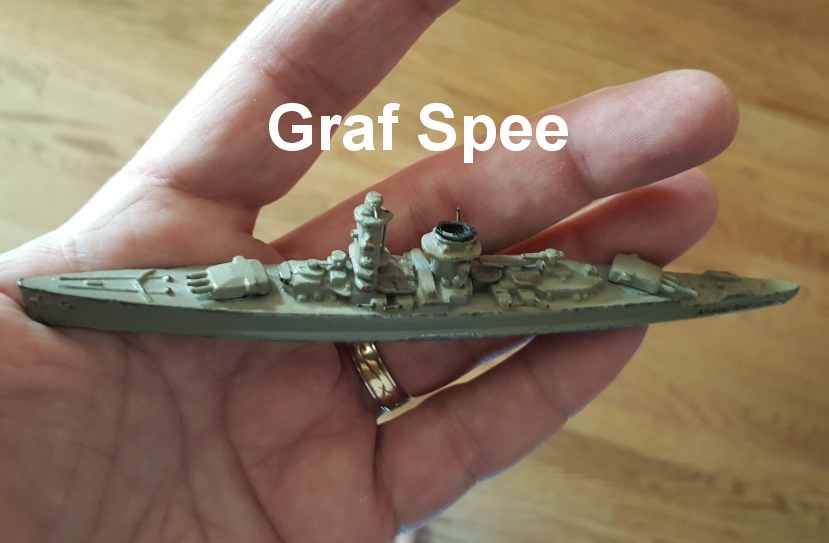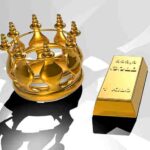I believe that history is chocked full of lessons for the small business owner if they take the time to look at the messages and consider how they might apply the lessons to their own business.
Recently, I was asked to speak to my Grandson’s 1st-grade class about my experience in the US Coast Guard. Recognizing that being first graders, tangible visual aids would go a long way towards making my message real, I searched my home to find some artifacts I could share with the kids. During my search for some Coast Guard objects, I came across a small metal cast model of the German pocket cruiser Admiral Graf Spee I got from my uncle when I visited him in Germany in the 1960s. Holding the model in my hand, I recalled some of its histories and knew it would be worthy of an article related to small business tactics, so here goes.
After WWI, Germany was restricted in the kind of ships it could build. Unable to build a battleship, Germany looked at the restrictions dictated by the Versailles Treaty and found a niche it could exploit.
The Graf Spee was designed with the largest and therefore longest range guns allowed so it could engage nearly every combatant ship of the day, except a battleship, out of range of their guns. It was equipped with twin diesel engines, something quite revolutionary for the day, and used less armor plating, so it was lighter. Being outfitted with the new diesel engines and weighing less it could simply outrun the only real threat it faced in a head to head battle, the mighty battleship and outgun the rest.
The lesson here is that businesses need to consider the strengths and weaknesses of the competition. Rather than try to compete head to head, look for ways to turn their strengths into a weakness as we discussed in the underdog strategy.
Businesses should apply some critical thinking about the problem to determine their unique value proposition. In today’s world, I recommend using a tool like the Business Model Canvas to help find your Blue Ocean Strategy and carve out your unique niche.
The mission of the Graf Spee was that of a merchant ship raider. It was created not to take on other naval warships but rather to disrupt enemy supply lines. Unlike German U-Boats that stuck without warning the target, the Graf Spee operated ethically and strictly adhered to the rules of Mercantile Warfare known as the Prize Rules that required the Graf Spee to stop and search ships for contraband and to make sure the crew was safely evacuated before destroying the ship. During its 4-year service life, the Graf Spee sunk 9 merchant ships with not a single merchant seaman’s life lost.
The lesson here for business is that you should not resort to shady tactics to meet your objectives. Businesses need to follow the accepted rules of engagement and operate with integrity. The business needs to be Credible, not Incredible in its dealings.
The Graf Spee was a master of deception. Once underway it painted its mast to make it appear like it was an allied warship when viewed head-on so as not to alarm the merchant ship or cause him to radio that he was being engaged by a merchant raider until it was too late. Also, the ships carpenters constructed fake gun turrets to make it appear to be more heavily armed than it was. Fake funnels were used so that when viewed from the side it would be miss identified. Also, the hull was painted with fake bow waves to make it appear that it was moving faster than it was confounding enemy combatants as they tried to calculate its speed for its fire control solutions.
The lesson for business is to disguise your intention to the competition so they do not have the time to counter your plans before you can set them into motions. While Sun Tzu’s Art of War addresses tactics of warfare many scholars have translated his famous quote to apply business as well:
“All warfare is based on deception. Hence, when we are able to attack, we must seem unable; when using our forces, we must appear inactive; when we are near, we must make the enemy believe we are far away; when far away, we must make him believe we are near.”
Sun Tzu
One of the biggest values the Graf Spee had to the German war effort involved the fact that its actions commanded the attention of the British Navy. Eight hunting groups comprised of three aircraft carriers and 16 battlecruisers were drawn away from other theaters of operations to hunt down and destroy the Graf Spee.
The lesson for business is sometimes you have to create a diversion for your completion to focus on. By forcing your competition to expend a greater level of effort towards a situation of your choosing often provides the edge your business needs to succeed somewhere else.
When the Graf Spee was finally discovered by three British warships and engaged in a head to head battle she could not escape from, she gave as good as she got before seeking refuge in Montevideo Uruguay. The captain of the Graf Spee feared that every day in port gave the Royal Navy more time to send one of its aircraft carriers to destroy or capture her.
After just 72 hours, not nearly enough time to repair her battle damage, the captain with limited options and thinking he was grossly outnumbered, offloaded most of her crew and with a skeleton crew sailed her out of port into a waiting armada of assembled British warships. However, rather than fight through the blockade as was expected, the crew scuttled the Graf Spee at the mouth of the River Plate to keep her from become a war prize and keep her technological secrets safe from the enemy.
The final lesson for business is knowing when it is time to quit. Many businesses will fail, but thru failure lessons are learned, and competitive resources depleted making future efforts more likely to succeed.
What lessons from the history of the Graf Spee can you apply to your business?










